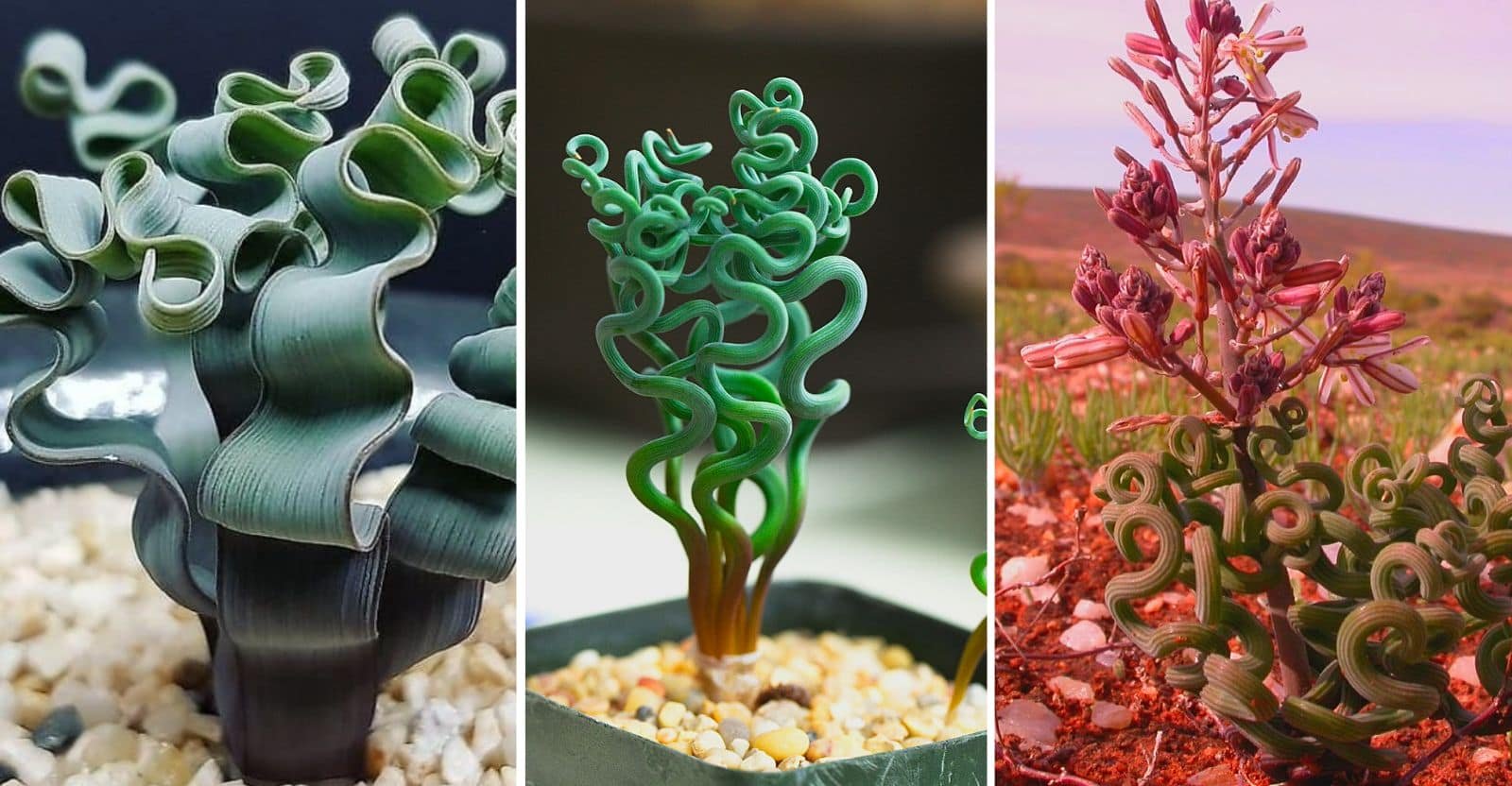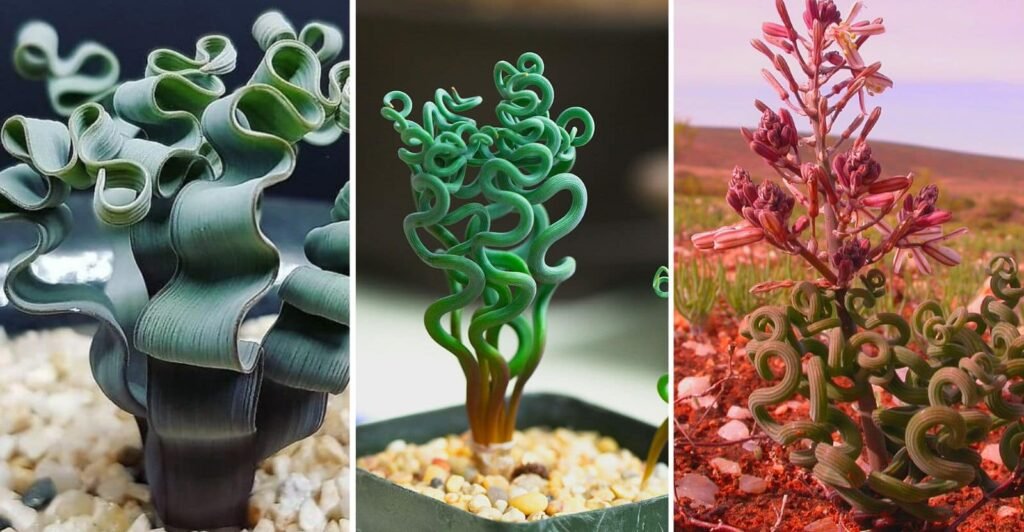
How to Grow and Care for Trachyandra Tortilis
If you’re a fan of unique and striking plants, Trachyandra Tortilis is a great choice. Known for its curly, ribbon-like leaves, this plant stands out in any garden or indoor space. Native to South Africa, this succulent is not only hardy but also drought-resistant, making it a fantastic option for dry climates or as an easy-care houseplant. Trachyandra blooms beautiful flowers and has leathery, resilient leaves that add texture and color to any setting.
Want to know how to grow and care for Trachyandra Tortilis Whether you’re planting it indoors or outdoors, this guide has everything you need to get started.
What is a Trachyandra Plant?
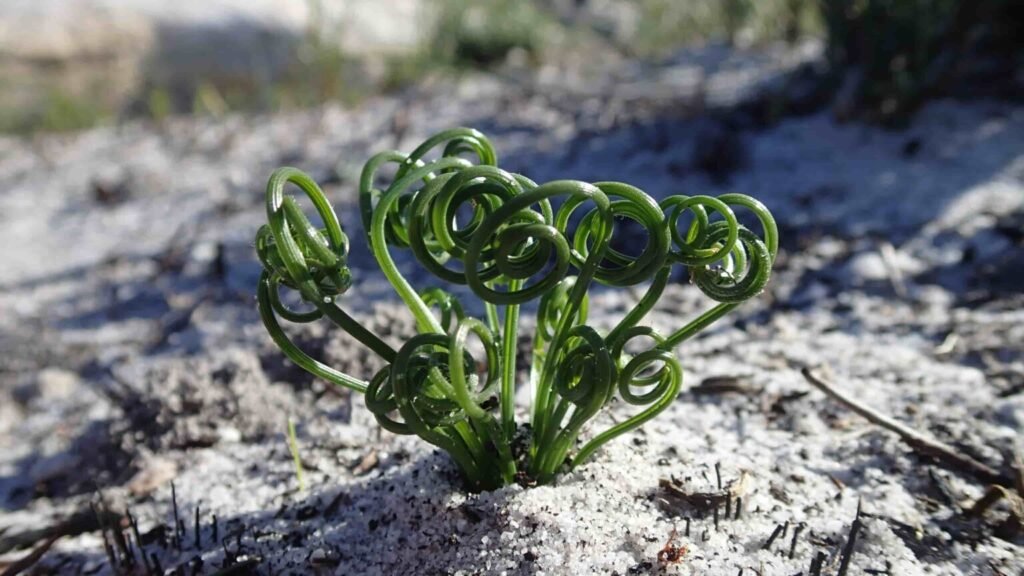
Trachyandra is a perennial succulent from the Albuca genus, with over 100 species. It’s also known as “Veldkool,” meaning cabbage, as indigenous people in Africa eat it as a vegetable. Trachyandra is loved for its curled, leathery green leaves and its star-shaped white flowers that bloom in late winter and early spring. The plant can grow up to 15-20 cm tall and 8-10 cm wide, with soft, flexible leaves and white, sometimes pink-tinged flowers. These flowers are short-lived but add a lovely touch to the plant.
It’s a tough plant, well-suited to areas with little rainfall, and can thrive indoors as well, making it a perfect decorative piece for your home or office.
Trachyandra Tortilis Plant Growth Summary
| Factor | Growth Condition |
|---|---|
| Soil | Well-drained sandy soil |
| Water | Water thoroughly once a week |
| Sunlight | 3 to 6 hours of direct sunlight |
| Temperature | 70–85 °F (21.1–29.4 °C) |
| Fertilizer | Half-strength fertilization |
| Propagation | Seed, stem, or leaf cuttings |
| USDA Zone | 9 to 11 |
How to Propagate Trachyandra
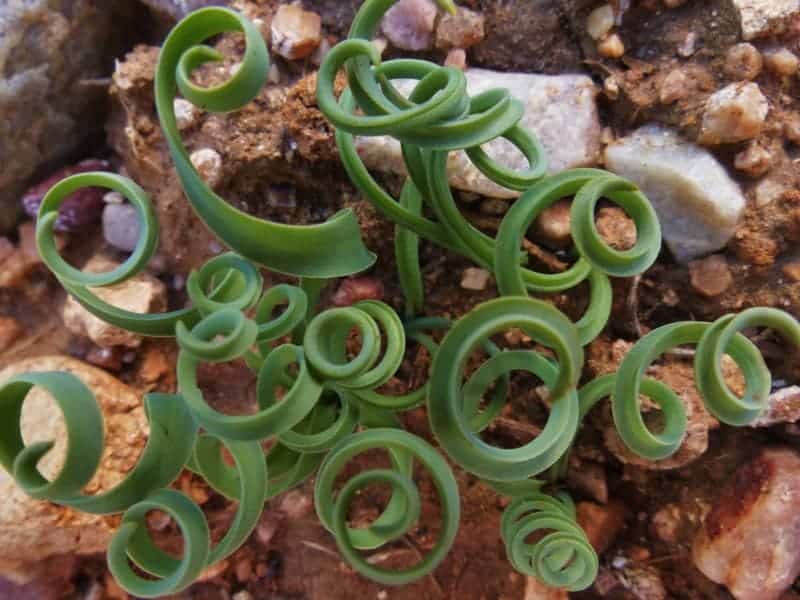
There are two primary ways to propagate Trachyandra: from seeds or stem cuttings. While growing from seeds can be slow and time-consuming, it’s possible to propagate the plant both ways.
Propagating Trachyandra from Seed

- Prepare Pots or Trays
Disinfect your pots or trays with a solution of 1 part bleach to 10 parts water to ensure they’re free of bacteria. Use a shallow container (around 4 inches deep) and fill it with a mix of potting soil, perlite, sharp sand, or pumice. - Plant the Seeds
Once the soil is moist, scatter the seeds over the surface, pressing them gently into the mix. Cover the seeds lightly with sand to keep them in place. - Moisture and Sunlight
Cover the seed tray with plastic wrap to maintain moisture and place it in a sunny location (but out of direct sunlight). Keep the temperature between 60-70 °F (15.6-21.1 °C). - Germination
Expect germination within 3 to 4 weeks. Once seedlings appear, remove the plastic wrap but continue to keep the soil moist. Be gentle with seedlings as they’re delicate. - Transplant
After about six months, transplant the seedlings into individual pots. Handle them carefully to avoid damaging the delicate roots.
Propagating Trachyandra from Stem Cuttings
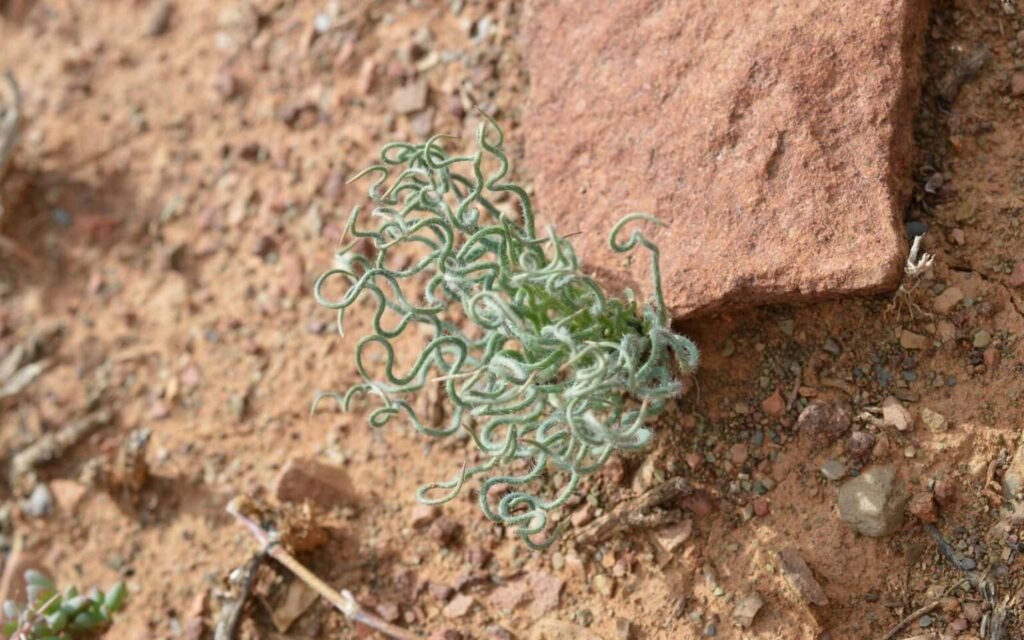
- Choose a Healthy Plant
Select a healthy, disease-free Trachyandra plant to take a cutting from. Early in the growing season is the best time to take cuttings. - Cut the Stem
Using a sterilized sharp knife or scissors, cut a 4–6 inch section of the stem. Be sure to make a clean cut to help it heal properly. - Prepare the Cutting
Remove any leaves from the lower part of the stem, then dip the cut end in rooting hormone (optional, but it can help promote root growth). - Callusing
Allow the cutting to form a protective callus over the cut end. This may take 1-2 weeks. - Plant the Cutting
Plant the cutting in a well-draining soil mix (potting soil, perlite, or pumice). Water it lightly, then wait until the soil begins to dry before watering again. - Transplant
After a few weeks, once the cutting has developed a strong enough root system, transfer it into a larger pot. Be sure not to over-pot.
How to Care for Trachyandra

Caring for Trachyandra is fairly easy as long as you provide the right conditions. Here’s what you need to keep in mind:
Soil
Trachyandra thrives in sandy or rocky soils that are well-drained. It’s used to the poor, nutrient-deficient soils of its native habitat, so adding organic material isn’t essential. A mix of potting soil, perlite, and small gravel (like pumice) is ideal for optimal drainage.
Watering
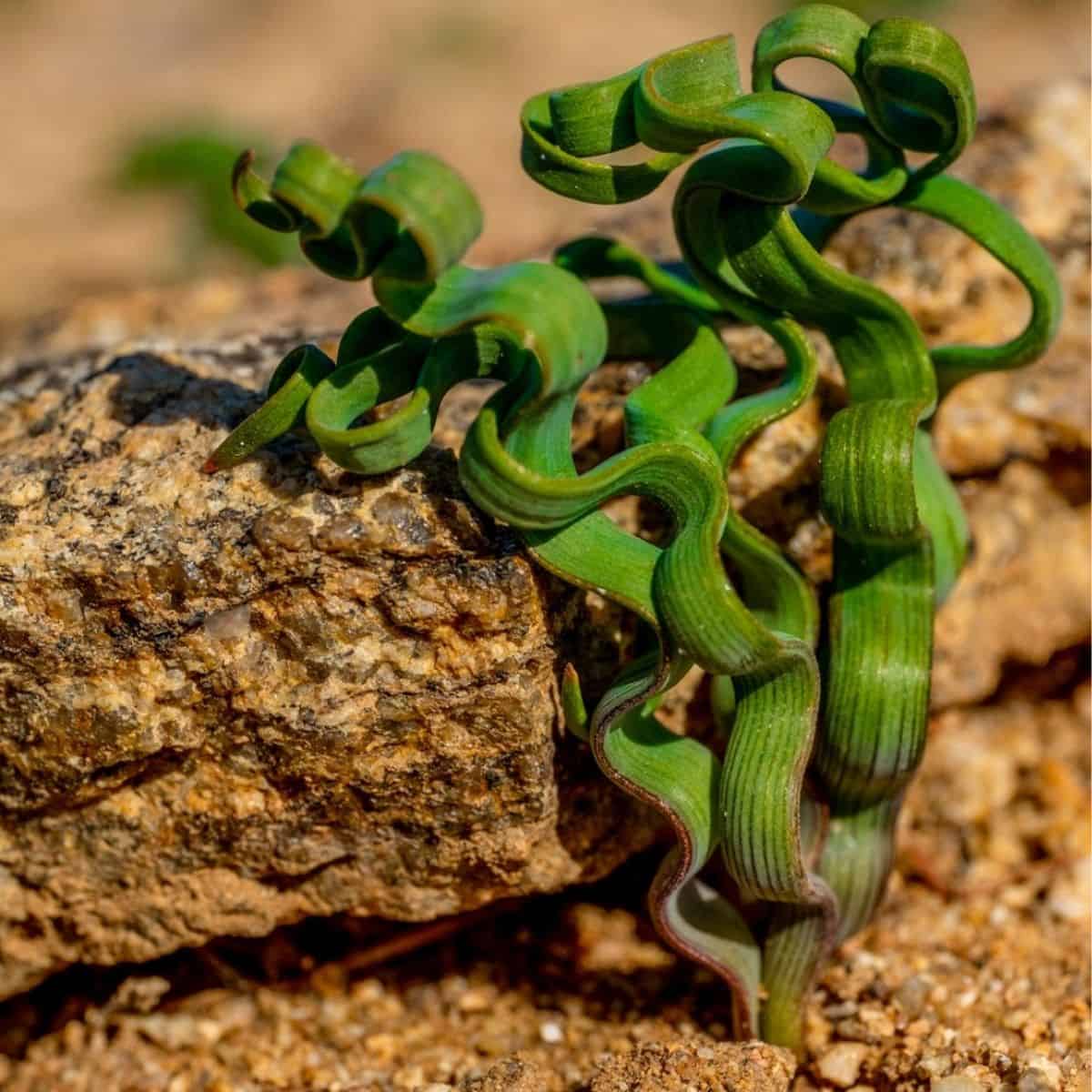
Since Trachyandra is a succulent, it’s adapted to storing water. However, it still needs regular watering, but you should avoid overwatering. Water thoroughly once a week, but make sure the soil has time to dry out between waterings. Overwatering can lead to root rot, so make sure excess water drains out of the container.
A simple trick is to place a flat pebble on the soil’s surface. If it’s still moist when you lift the stone, don’t water. If it’s dry, it’s time to water again.
Fertilizing
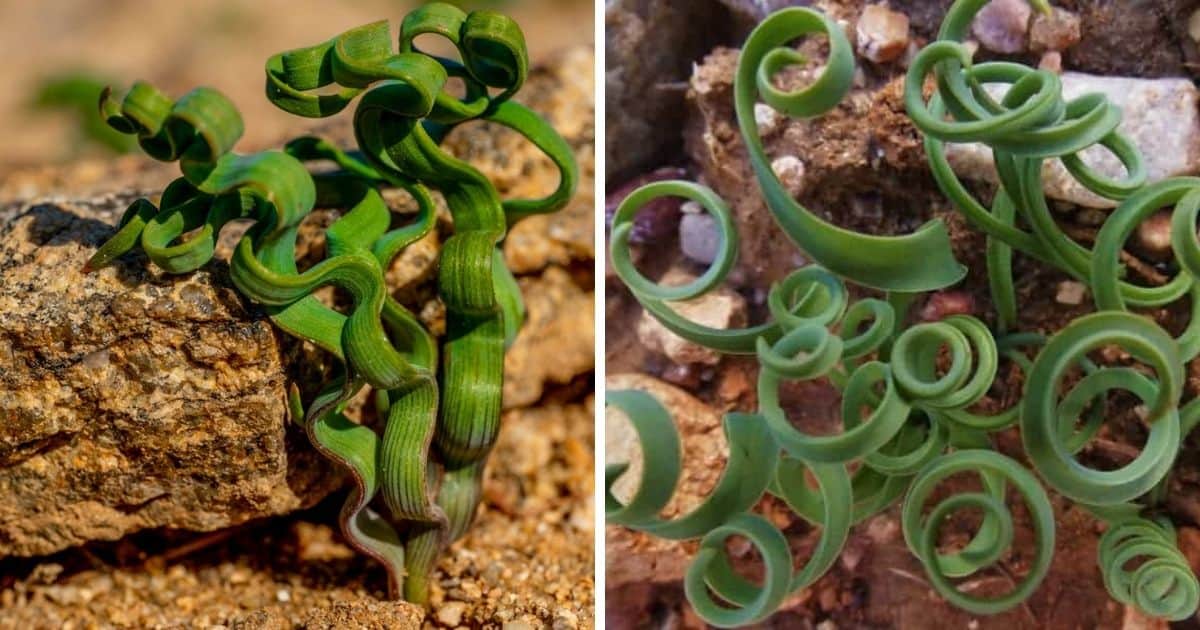
Trachyandra doesn’t require much fertilizing, but during the growing season (spring and summer), you can feed it with a diluted, water-soluble fertilizer with equal amounts of nitrogen, phosphorus, and potassium. Avoid fertilizing during its dormancy in winter.
Temperature

Trachyandra prefers daytime temperatures between 70-85 °F (21.1-29.4 °C) and nighttime temperatures around 50-55 °F (10-12.8 °C). It can tolerate a slight variation in temperature but avoid extreme cold. A little cool-down at night can actually encourage blooming.
Sunlight

Trachyandra needs at least 3-6 hours of sunlight each day. When growing it outdoors, make sure it’s not exposed to direct, intense sun right away, as this can cause sunburn. If growing it indoors, place it near a south-facing window or under artificial light to ensure it gets enough light.
Pruning
To maintain a healthy plant, prune any dead or damaged leaves regularly. Since Trachyandra doesn’t grow too large, pruning helps it stay neat and encourages healthy growth.
Trachyandra Pests and Diseases
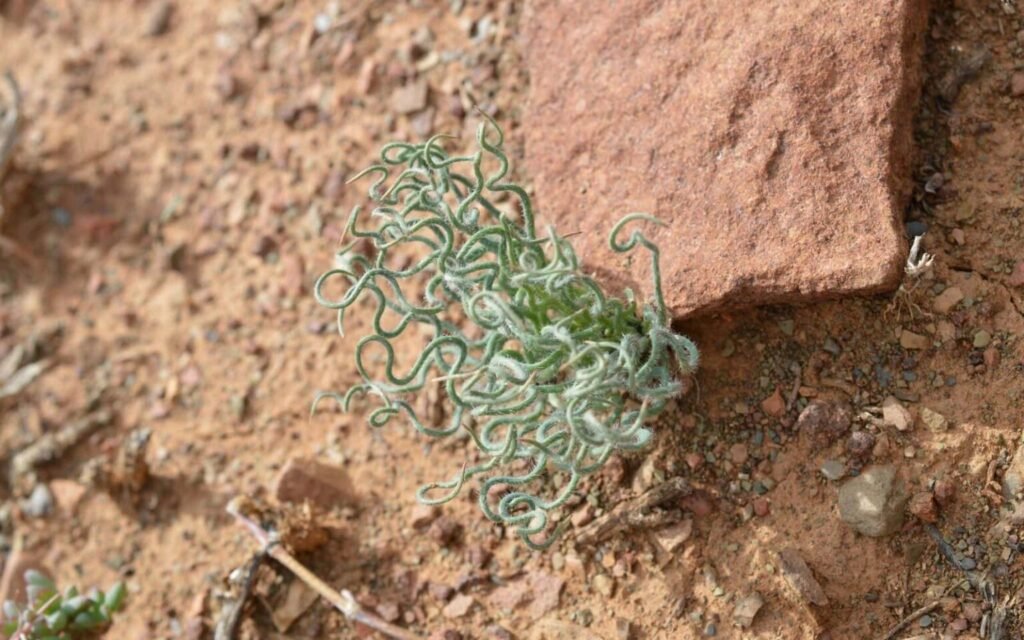
Like all plants, Trachyandra can be vulnerable to certain pests and diseases, particularly in humid conditions or shaded areas. Common pests include:
- Aphids: These small insects suck nutrients from the plant’s tissues, weakening the plant.
- Leaf Spot: Caused by wet weather, this disease leaves brown or black spots on the leaves.
- Mealybugs: These pests live on the plant’s roots or stems and can be particularly damaging.
- Whitefly: These tiny insects feed on the plant and produce sticky residue.
To treat these issues, you can use fungal or insecticides or manually clean the plant to remove pests. Ensuring proper air circulation around the plant can help prevent most diseases.
Where to Buy Trachyandra

Trachyandra can be a bit harder to find compared to other succulents, but it’s available at some online garden retailers like Amazon and eBay. If it’s out of stock, you can reach out to the seller directly or join a waiting list. Always make sure to buy from reputable sources to ensure you’re getting a healthy plant.
By following these simple care tips, you can successfully grow and enjoy Trachyandra Tortilis as a unique and beautiful addition to your indoor or outdoor garden.Tools
FAQs for Caring for Trachyandra Tortilis
1. What are the ideal growing conditions for Trachyandra Tortilis?
Trachyandra Tortilis thrives in well-draining soil with plenty of sunlight. It prefers warm temperatures (between 65-85°F or 18-29°C) and can tolerate periods of dryness. This plant enjoys bright, indirect light when grown indoors and can tolerate direct sunlight if grown outside in suitable climates.
2. How often should I water Trachyandra Tortilis?
Water Trachyandra Tortilis sparingly. As a succulent, it is more tolerant of drought than overwatering. Water the plant thoroughly, but allow the soil to dry out completely between waterings. During the winter months, reduce watering even further as the plant goes into a semi-dormant state.
3. Can Trachyandra Tortilis be grown indoors?
Yes, Trachyandra Tortilis can be grown indoors as long as it has access to bright, indirect light. A sunny windowsill or a location near a south- or west-facing window is ideal. Ensure the plant is in a pot with good drainage to prevent root rot.
4. How do I propagate Trachyandra Tortilis?
You can propagate Trachyandra Tortilis through leaf or stem cuttings. Cut a healthy leaf or stem and let it air dry for a day or two to callous. Then, plant it in a pot with well-draining soil, and water lightly. Keep the cutting in a warm, bright spot until roots form, which typically takes a few weeks.
5. Does Trachyandra Tortilis require any special fertilizer?
Trachyandra Tortilis does not require frequent fertilization. Feed the plant with a diluted, balanced, water-soluble fertilizer once a month during the growing season (spring and summer). Avoid fertilizing during the fall and winter when the plant is not actively growing.
6. What type of soil is best for Trachyandra Tortilis?
This plant prefers well-draining soil, such as a cactus or succulent mix. You can also mix your own by combining regular potting soil with sand, perlite, or pumice to improve drainage. Good drainage is crucial to prevent root rot.
7. How do I prevent pests on Trachyandra Tortilis?
Trachyandra Tortilis is relatively pest-resistant, but it can occasionally attract mealybugs or aphids. Regularly check the plant for pests, especially under the leaves. If you notice any, remove them with a damp cloth or use an insecticidal soap or neem oil for treatment.
8. Why are the leaves of my Trachyandra Tortilis turning yellow?
Yellowing leaves can be a sign of overwatering, poor drainage, or nutrient deficiencies. Ensure the plant is in a pot with drainage holes and let the soil dry out between waterings. If the plant is in low light, move it to a brighter location. Yellowing can also occur if the plant is exposed to extreme temperatures or drafts.
9. How do I prune Trachyandra Tortilis?
Pruning is not usually necessary for Trachyandra Tortilis, but you can trim back any dead or damaged leaves to improve the plant’s appearance. Use clean, sharp scissors or pruning shears, and be sure to remove any infected or diseased parts of the plant to prevent spreading.
10. Can Trachyandra Tortilis be grown outdoors?
Yes, Trachyandra Tortilis can be grown outdoors in climates with mild winters and plenty of sunlight. It is ideal for zones 9-11 and thrives in well-draining soil. If you’re growing it outdoors, be sure to protect it from frost during the colder months.
11. How do I know when to repot Trachyandra Tortilis?
Repot Trachyandra Tortilis every 1-2 years or when the plant outgrows its current pot. If you notice that the roots are crowded or sticking out of the drainage holes, it’s time to repot. Choose a pot that is only 1-2 inches larger than the current one to avoid excessive moisture retention.
12. Is Trachyandra Tortilis toxic to pets?
Trachyandra Tortilis is not known to be toxic to pets, but it’s always a good idea to keep plants out of reach of curious pets to avoid any potential ingestion. As a general rule, succulents should be handled with care around animals.
Conclusion
Trachyandra Tortilis is a unique and low-maintenance plant that can thrive both indoors and outdoors, adding a touch of beauty to any space. By following proper care guidelines—providing ample sunlight, well-draining soil, and occasional pruning—you can enjoy this beautiful plant for many years. Whether you’re growing it in your garden or as a houseplant, Trachyandra Tortilis will be a standout addition to your collection. Happy gardening!

